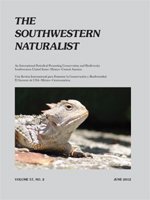Peer-reviewed articles

Abstract
We used data on alleles of seven polymorphic microsatellite loci in 142 individuals of the star cactus Astrophytum asterias from five subpopulations to estimate genetic parameters. Four of the subpopulations had high levels of heterozygosity and allelic diversity compatible with efficient outcrossing, and low FST-values that suggested high rates of gametic gene flow effected by winged-insect pollinators. The fifth subpopulation that was small and occupied the smallest area had low levels of heterozygosity and allelic diversity, which can be caused by small populations, inbreeding, geographic isolation, and founder effect. Our research indicated that all subpopulations, except one, were genetically suitable sources of propagules for reintroduction or for augmentation of other populations.

Abstract
We report the development of polymorphic microsatellite markers for the endangered North American cactus Astrophytum asterias (Cactaceae). Six loci, averaging 8.5 alleles per locus, were found to amplify genomic DNA consistently in 94 individuals from four geographically defined demes in South Texas. These markers will permit the generation of appropriate data for estimating population genetic parameters, population structure and the degree of inbreeding in the small, fragmented populations of A. asterias that currently exist. These are the first microsatellites reported for the genus Astrophytum and for the tribe Cacteae.
PDF not available
